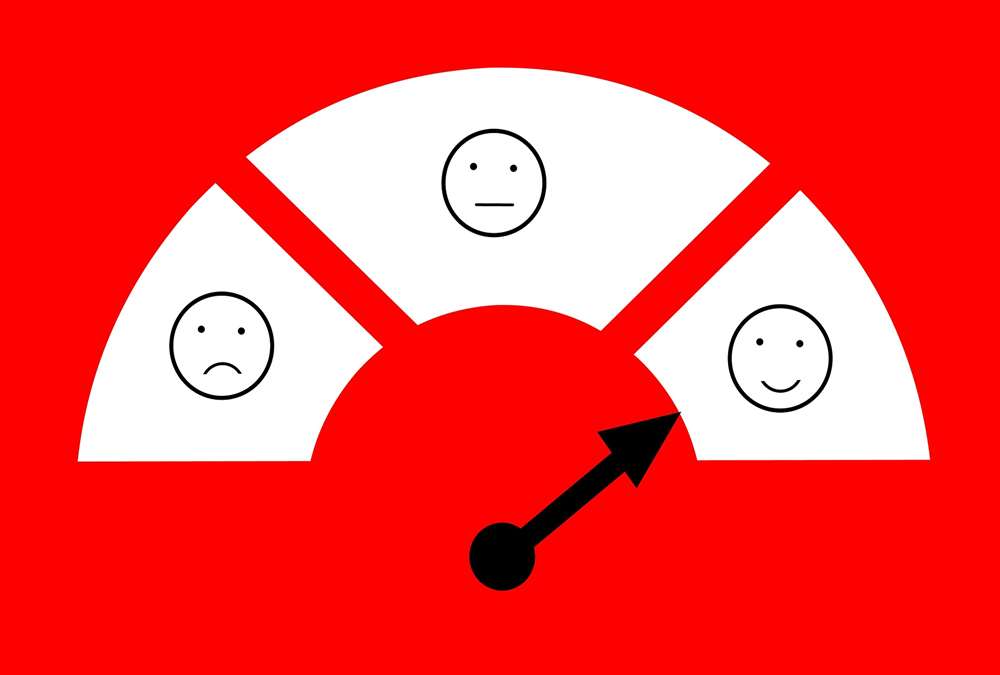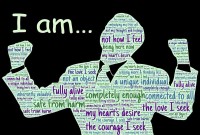- Home
- Business Processes
- Industry Knowledge
- Aerospace Industry
- Automotive Industry
- Banking Domain
- BFSI Industry
- Consumer/ FMCG Industry
- Chemicals Industry
- Engineering & Construction
- Energy Industry
- Education Domain
- Finance Domain
- Hospitality Domain
- Healthcare Industry
- Insurance Domain
- Retail Industry
- Travel and Tourism Domain
- Telecom Industry
- Leadership Skills
- eLearning
- Home
- Leadership
- Communication Skills
- Barriers to Communication
Barriers to Communication
Many people think communication is easy. It is said that communication can never be a hundred percent complete. Many factors are involved in the process of communication and something can always go wrong with one or more of these. It becomes difficult and complex when we put barriers in communication. Recognize barriers to interpersonal communication and examine specific strategies for overcoming those barriers.
What do we mean by barriers to communication?
The communication process is successful only when the receiver understands the message as intended by the sender. It sounds quite simple but many times sender thinks that he has delivered a clear message, only to learn later that the intentions were totally misunderstood. Many messages that we send reach their destination, but many are only partially understood.
The word 'barrier' usually carries the meaning of an impediment at different levels. It could be a physical wall or fence, as well as a mental wall or obstruction which hinders thoughts and perceptions. You can improve your chances of communicating successfully by learning to recognize barriers that are known to disrupt the communication process. The most significant barriers for individuals are bypassing, differing frames of reference, lack of language skills, and distractions.
Common Barriers to Communication
You can improve your chances of communicating successfully by learning to recognize barriers that are known to disrupt the communication process. The most significant barriers for individuals are explained below:
Physical barriers
Physical barriers include marked out areas into which strangers are not allowed, e.g. offices having electronic doors that can be opened by access cards. Senior leaders could be seated in separate areas/rooms made for people of different status. Your organization may have physical access restrictions to a working unit that is physically separated from other such areas. Using wrong channels or mediums like giving long messages over the phone or detailed messages verbally is also a barrier. The receiver may forget or get confused. Always be crisp and to the point.
Perceptual barriers
Perceptual barriers are the individual ways of perceiving or looking at things around us. In the process of perceiving things, we select information, organize it, and then interpret it in our own way. This may also prove to be a barrier to communication.
Emotional barriers
Emotional barriers are our fears, mistrust, misgivings, and suspicion of others. We have not often heard in our childhood that children should be seen and not heard nor should they question or retaliate to elders. As a result, many people hold back from communicating their thoughts and feelings. Psychological factors or personal problems can also come in the way of communication. Anger, hate, jealousy, worry, sorrow could influence peoples' judgment and prevent them from thinking seriously and fairly. Hence, while on job avoid these negative feelings.
Cultural barriers
Cultural barriers cause miscommunication because of the presence of diverse cultures, each having their own expressions and behavioral patterns. With global communication, it has become common to adopt global etiquette, e.g. it is considered rude to burp after a meal especially in public.
Language barriers
Language barriers occur when we communicate with people who are not familiar with our expressions, slang, or jargon. No matter how extraordinary the idea, it won’t be understood or fully appreciated unless the communicators involved have good language skills. Each individual needs an adequate vocabulary, a command of basic punctuation and grammar, and skill in written and oral expression. As an example, Indians do not always understand the idiomatic expressions of British or American English.
Bypassing
One of the biggest barriers to clear communication involves words. Each of us attaches a little bundle of meanings to every word, and these meanings are not always similar. Bypassing happens when people miss each other with their meanings. Bypassing can lead to major miscommunication because people assume that meanings are contained in words. Actually, meanings are in people. For communication to be successful, the receiver and sender must attach the same symbolic meanings to their words. Many words in English and in other languages have different meanings relating to the context of what is being said. You must be careful not to use words that may cause confusion in the mind of the receiver. So use words that are simple and easily understood.
Differing Frames of Reference
Another barrier to clear communication is your frame of reference. Everything you see and feel in the world is translated through your individual frame of reference. Your unique frame is formed by a combination of your experiences, education, culture, expectations, personality, and other elements. As a result, you bring your own biases and expectations to any communication situation. Because your frame of reference is different from everyone else’s, you will never see things exactly as others do.
Distractions as Barrier
Other barriers include emotional interference, physical distractions, and digital interruptions. Shaping an intelligent message is difficult when one is feeling joy, fear, resentment, hostility, sadness, or some other strong emotion. To reduce the influence of emotions on communication, both senders and receivers should focus on the content of the message and try to remain objective. Physical distractions such as faulty acoustics, noisy surroundings, or a poor cell phone connection can disrupt oral communication. Similarly, sloppy appearance, poor printing, careless formatting, and typographical or spelling errors can disrupt written messages. What’s more, technology doesn’t seem to be helping. Knowledge workers are increasingly distracted by multitasking, digital and information overload, conflicting demands, and being constantly available digitally. Clear communication requires focusing on what is important and shutting out interruptions.
Preconceived Notions & Stereotyping
Human nature being what it is, people are often prejudiced and biased. It is evident in the manner in which they communicate. This acts as a barrier and adversely affects your communication. At times you pre-judge people before they speak, thus allowing your opinions and ideas of them to come in the' way of what they are trying to say. Stereotyping is placing people into blocks and forming opinions about them e.g. Tourists want drugs; Businessmen are crooks; Workers create trouble, Politicians are shrewd; Youth is irresponsible. Take a positive approach towards people and what they say, and avoid such preconceived notions.
Poor Listening Skills
Poor listening skills can prevent us from hearing oral messages clearly and thus responding properly. Listening means understanding the speaker, not only hearing her/his words. So listen to what is being said. In fact, one of the pitfalls which people are prone to be mental dissipation or subconscious mind wandering. The only way to overcome this kind of mind-wandering is through a determined effort to listen carefully. Also, being unable to arouse the listener’s interest due to the lack of involvement of the listener in the subject is another barrier.
Poor Verbal Skills
This is like speaking too fast or too slow, too loud, or too soft or keeping a monotonous tone of voice. Often you are unable to articulate properly because your lips and facial muscles are tight. To be an effective speaker, your lips, facial muscles, and articulating organs must all be flexible. Sometimes the sender may confuse the message by speaking without thinking of what they really want to say. This can confuse the receiver. The speaker is, at times, not convinced about the subject or not sure about the facts or the purpose of the occasion. In fact, in this industry, as perhaps in most jobs, you must be aware of the rules and procedures and be able to explain and justify them. Sometimes you may feel that certain rules are being violated by a guest in a hotel for instance. How would you deal with this situation? A certain degree of firmness and professionalism should be used to deal with such matters. In fact, you can be both polite as well firm at the same time.
In order to avoid these pitfalls, there are several things like learning to enjoy communicating with others. Work on improving your poise and confidence and remember that the skills of communication are to be constantly developed and you keep learning through experience and interaction. Your aim should be to effectively communicate your ideas clearly, confidently, creatively, interestingly, and persuasively.
Related Links
You May Also Like
-
A manager or an employee in an organization who is experiencing a high level of stress may develop high blood pressure, ulcers, irritability, difficulty in making routine decisions, loss of appetite, accident proneness, and the like. These can be subsumed under three general categories, physiological, psychological, and behavioral symptoms. Stress can give rise to a number of changes.
-
Storming Stage of Team Development
Storming is the second stage of team development and this stage is characterized by a bid for power and inter-personal conflicts. Learn the key factors that occur in the storming stage and the strategies that a team leader can adopt to pass this stage of high winds
-
Generating Ideas using SCAMPER
SCAMPER is an activity-based thinking process that can be performed by Cooperative learning. SCAMPER is an acronym that provides a structured way of assisting students to think out of the box and enhance their knowledge. This can be used in the organizational context as a technique for creative problem solving and as a toolkit to generate fresh ideas.
-
Narrative leadership is interpreted as the leader who aspires to construct leadership by telling stories. Leadership is a task of persuasion, of winning people’s minds and hearts. Storytelling is thus inherently suited for the task of leadership. Learn about the narrative leadership style and how to use this style to inspire and motivate followers or to manage change.
-
Process & Stages of Creativity
Creative ideas do not come just like that. There is a process to it. There are a number of techniques of creativity to support the generation of ideas but the widely practiced ones are brainstorming and lateral thinking. Most innovations are not so much the product of sudden insights as they are the result of a conscious process that often goes through multiple stages. The creative process can be divided into four stages of preparation, incubation, evaluation, and implementation.
-
Narcissistic leadership is a leadership style in which the leader is only interested in him. Narcissists are good for companies that need people with vision and the courage to take them in new directions. Such leaders sometime might be highly successful, but is it a style to be followed. Learn the various types of narcissistic leadership and the characteristics of such leaders.
-
In the field of communication studies, there are numerous models. No one model is suitable for all purposes and all levels of analysis. Some common models are known as Lasswell Model, George Gerbner Model, David Berlo Model, Shanon and Weaver Model, Osgoods Model, and Schramm Model. All these describe the four components of the communication process, namely, the source (communicator), the message, the channel, the receiver (audience).
-
Certain generally accepted truths or principles of communication are important to consider when communicating with others. These principles hold true for all people in every culture. By understanding these principles, you will experience greater communication effectiveness. An effective communication system is one that achieved its objectives. Communication is effective where there are no barriers to communication.
-
Recognizing Stress & its Sources
As an individual, you almost certainly know what stress feels like. Stressors are events or situations to which people must adjust. Stressors may be physical or psychological in nature. The level of severity of stress is determined not merely by exposure but the intensity, duration, and frequency of stressors. The sources of stress are many. They arise from multiple areas both with the individual and from the environment.
-
Generating Ideas using Brainstorming
The brainstorming technique was developed by Alex F. Osborn in 1957 and brainstorming means where a team of members generates a large amount of alternative fruitful ideas on a specific problem without any criticism and then evaluates each idea in terms of their pros and cons. Brainstorming techniques fall into four broad categories: visioning, exploring, modifying, and experimenting.
Explore Our Free Training Articles or
Sign Up to Start With Our eLearning Courses

About Us
Learning
© 2023 TechnoFunc, All Rights Reserved










